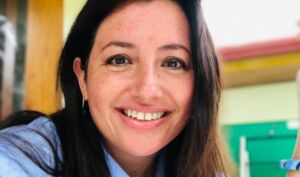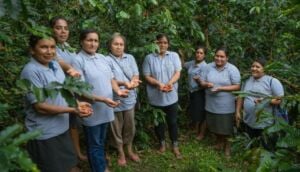The World Economic Forum’s Global Competitiveness Report tells us that sustained economic growth across Africa is due, at least in part, to institutional reforms in the health and primary education sectors.
Education increases economic growth, helps families and communities to prosper, and empowers people to gain employment and live healthier, more fulfilling lives. In the 21st century global economy, a well-educated and skilled workforce is critical for countries and companies to thrive. That is why we should all be concerned that many parts of Africa continue to suffer from high levels of unemployment and chronic skills shortages. So, how the global community frames a post-2015 development goal on education will have a real impact in sustaining GDP growth across Africa.
There has been substantial progress in improving access to education – 39 million more children are now in school and enrolment rates have improved to over 80 percent. However, what really matters is that once inside the classroom, children learn the literacy, numeracy and life skills that will enable them to succeed throughout childhood and as adults. If 10 million children in sub-Saharan Africa drop out of primary school every year, and 40 percent of African children leave school illiterate, we cannot claim that the current Millennium Development Goal on access to primary schooling has been enough.
Therefore, a post-2015 education goal must focus on learning outcomes as well as access, prioritising not just enrolment and completion numbers, but also longer-term school progress and student achievement. Measuring learning outcomes is no easy task, but it is essential to improving the quality of global education.
Since mid-2012, Pearson has co-chaired (with UNICEF and Pratham) the Learning Metrics Task Force, which brings together 30 different organisations from around the world to make sure that the post-2015 goals include a focus on learning. In consultation with experts from across the education and development communities, the Task Force is working to build consensus on global measures and practical actions for delivering progress on learning.
The Task Force has identified six areas for measurement spanning early childhood, primary school and secondary school. In my view these could be brought together as targets under a post-2015 education goal, articulated along the following lines: all children should receive a quality education with good learning outcomes – in order to become active global citizens and secure meaningful employment.
Setting a goal, of course, is one thing; delivering on it is what really counts. To resolve the learning crisis and bridge the financing gap of $26bn that UNESCO says is required to meet existing education targets, governments and the private sector must step up investments in education.
Companies can support initiatives such as the Global Business Coalition for Education (Pearson is a founding member), the Global Partnership for Education (for which we represent the private sector on the Board), and the Global Education First campaign, which all mobilise the collective expertise, efforts, and resources of multiple actors to achieve greater scale and impact on joint education priorities.
Business, with its capacity to move quickly, try new approaches and then scale successful innovations, can often take risks that other actors cannot afford to make. In 2012, for example, Pearson launched the Pearson Affordable Learning Fund, which makes minority equity investments in private companies committed to improving access to quality education for the poorest families in the world through innovative approaches.
This does not diminish the need to ensure public funding is spent more efficiently and effectively, and with more accountability. Pearson is also working with academics, practitioners and policymakers on data collection and analysis to deepen our collective knowledge. We need to open up the ‘black box’ of education data to understand what really drives learning outcomes, in order to help teachers and policymakers base their work on evidence.
Education and learning do not occur in a vacuum, of course. A child who is sick, hungry, or malnourished will have a hard time learning at school. But education can lead to better healthcare and nutrition, declining birth rates and poverty reduction. A child born to a mother who can read is 50 percent more likely to survive past the age of five. Therefore, any post-2015 education goal should recognise the interdependencies between education and other development goals.
This article was first published on This is Africa, and is reproduced with permission.










